
11 mistakes you make as a beginner surfer (and how to fix them)
June 30, 2025There are a whole bunch of mistakes that can easily be made when learning how to surf. Been there, done that! The good thing about making mistakes is that it’s actually one of the best ways to learn what to do better in the future. We list some of the most common mistakes that beginner surfers make – and what you should do to fix them!
If you’re new to surfing, you may have noticed that it’s not as easy as standing up on a board and catching waves right off the bat. There are many unwritten rules to follow and things that you should and shouldn't do. It may feel a bit overwhelming at times to keep up, especially when you’re new, but you’re far from alone! There are beginner mistakes in every sport, surfing is no exception. To make the start of your surfing journey a bit easier, we’ll share the most common mistakes that beginner surfers make and some tips on how to avoid them.
After reading this post, please don’t be discouraged if you’re guilty of any of the mistakes listed below. Making mistakes is a part of the learning process and it helps us become better surfers. Keep in mind, that even experienced surfers make mistakes too!
Mistake number 1: Surfing on the wrong board

Problem: It may be easy to start off with a new sport, not being particularly good at it and then blaming it on the equipment. But, in many cases that’s exactly where the problem may lie for beginner surfers. If you enter the white water with a shortboard or a smaller board than you can handle, you’ll have a tough journey ahead of you. Sure, you’ll look cool at the beach, but it will be a very different story once you get into the waves.
How to fix it: Spare yourself the unnecessary struggle of using a smaller board just for the like count on social media. A soft-top surfboard is your friend! Embrace that you are a beginner and enjoy your time learning to catch waves on a bigger board. You’ll have much more balance and control. Learning how to paddle and catch waves will be a hundred times easier on a soft-top than it would have been with a shortboard, trust us!
Mistake number 2: Ditching the warmup
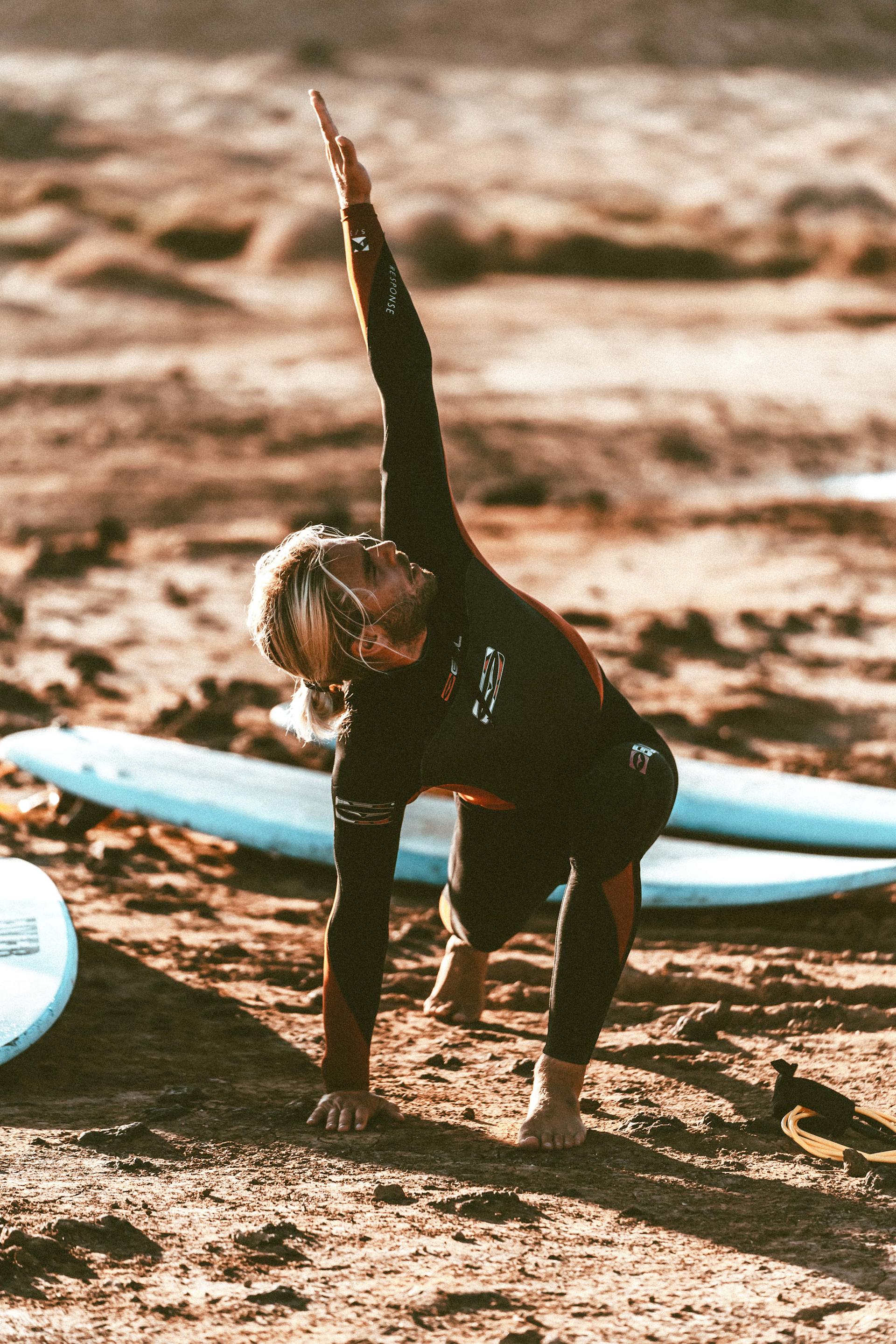
Problem: Just like any other sport, a proper warmup is important to do before your surfing session. When you're surfing you'll do many sudden movements (sometimes unexpectedly!) that require your body to be ready for them. You don’t want to injure yourself simply because you didn't take the time on land to get your muscles, tendons and joints ready.
How to fix it: Jog around on the beach, do some stretches and practice your pop-up in the sand. This will not only lower the risk of injury, but it will also get you into the right mindset for the upcoming surf!
Mistake number 3: Dragging your board
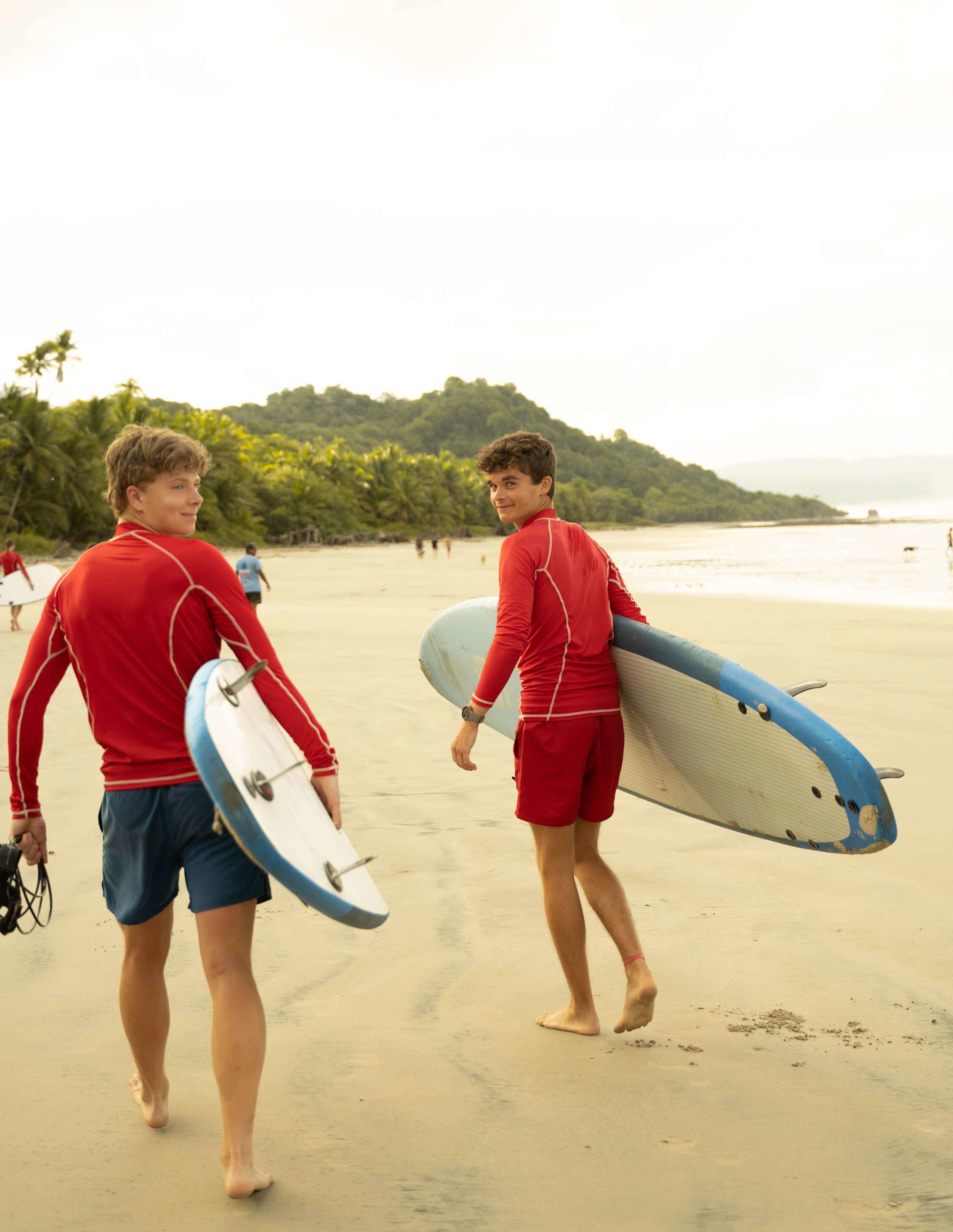
Problem: Dragging your board on the beach isn't only making you look like you don't know what you're doing, you’re also damaging the board! If the nose or the tail of the board is getting dragged in the sand it will get scraped by the small stones. Especially if you’re renting a board, dragging it isn’t cool!
How to fix it: Probably the easiest answer on the list; lift your board up! Carry your board under your arm just like you would if it was a book or a skateboard. If the board is too heavy for you to carry by yourself, get help from a friend and carry your boards together.
Mistake number 4: Wearing your wetsuit inside out
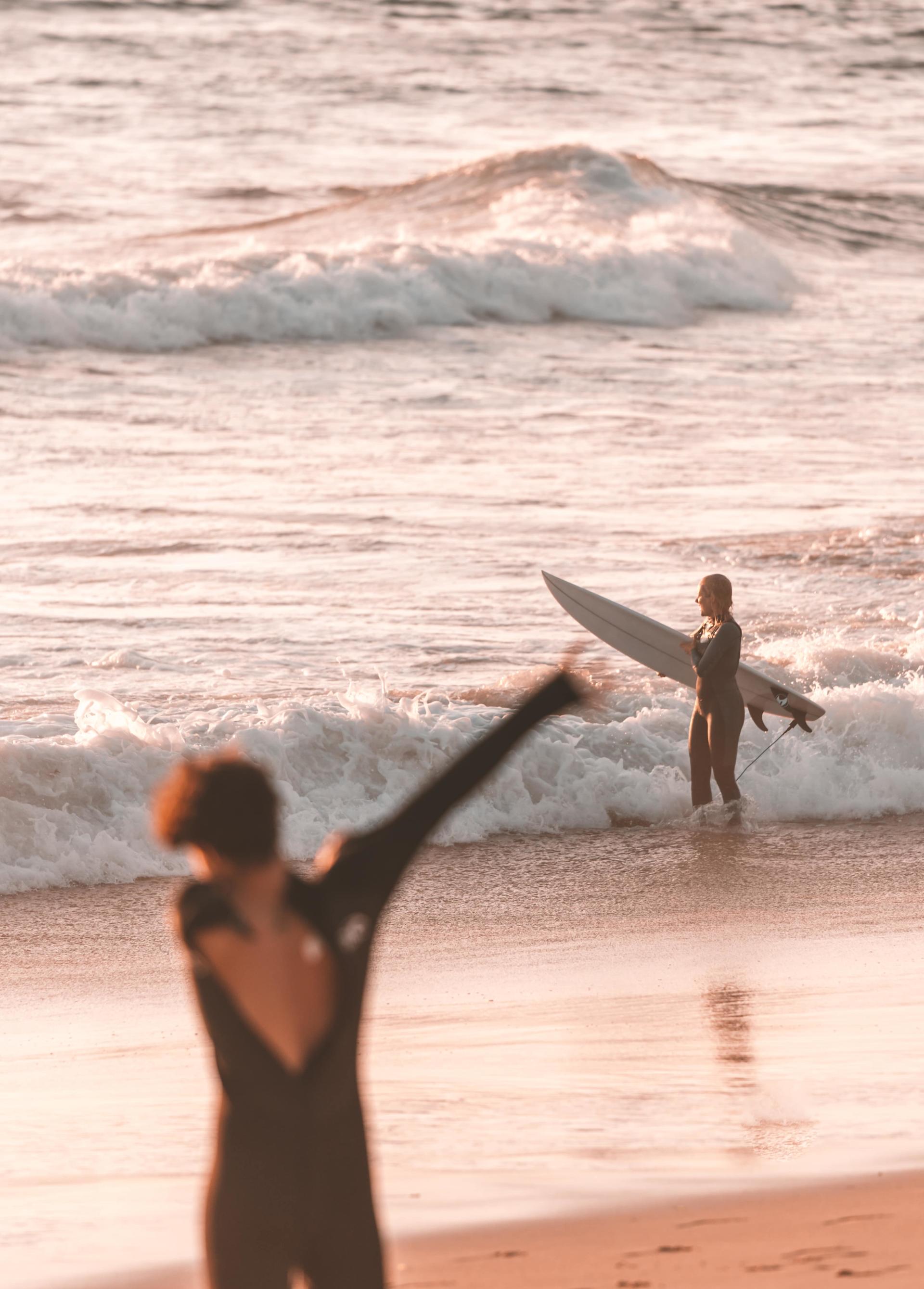
Problem: When surfing in colder conditions, the wetsuit is playing a key role! The wetsuit helps you to keep your body warm thanks to its synthetic rubber (called neoprene) and its many layers. The point of the wetsuit is to keep you from getting hypothermia, but wearing it the wrong way will not keep you warm and can make your session pretty unbearable.
How to fix it: Putting on the wetsuit can sometimes feel like the toughest part of the surf experience, it can be time-consuming and a bit of a struggle. Double-check that the wetsuit isn't backwards or inside out when you put it on. This may be trickier than it seems, but one indicator that it's on right is that the logo of the wetsuit brand is on the front. There’s only one way a wetsuit should be worn, so make sure you’ll put it on right!
Mistake number 5: Heading out in unknown conditions
Problem: Knowing which conditions to surf in isn’t the easiest thing to do, especially for an inexperienced beginner. The ocean can be frightening and you shouldn't underestimate its power. When you don't know the conditions you’ll find it hard to pick the right time for you to surf and you can even get yourself into bad situations if you paddle out into unknown water. By not knowing the conditions, you’re putting yourself at unnecessary risk. For example, you can get caught in a rip current and all of a sudden notice that you have drifted far from shore. So learning the surf conditions is important not just for the good times, but also to keep yourself safe.
How to fix it: The best way to learn how to read the ocean and know which conditions that’s good for you to paddle out in is to learn from an instructor at a surf school. The instructor knows where to go and what to do to keep you safe. Once you start going without an instructor, asking more experienced friends for advice and checking the surf forecast are the next steps to take. Being a good swimmer is also important since it will help you manage uncomfortable situations. When getting into a rip current, paddling parallel to the shore is the best way to get out safely.
Check out this post on how to read the surf forecast!
Mistake number 6: Bad pop-up timing
Problem: The pop-up is a crucial part of surfing and one of the absolute first things you learn as a beginner. But it’s tricky! You need to know the momentum of the wave to find that perfect moment to get up on the board. As a beginner, you’ll mistime many waves and fall off your board a lot before you get a sense of when to stand up.
How to fix it: In surfing, timing really is everything! So when you are doing your pop-ups, make a mental note for yourself to not get up too quickly (or too late!). When you see the wave you want to ride, start to paddle with efficiency and speed. When you feel that the wave lifts you up, give it one or two more paddle strokes and do your pop-up. Remember to not rush this movement! Keep in mind that it will require a lot of practice before you’ll get it right, so be gentle with yourself.
Mistake number 7: Rail grabbing
Problem: Gabbing the rails, the sides of your surfboard, is a common mistake amongst beginner surfers. When performing the pop-up, beginners tend to hold onto the rails for stability, but this usually ends up in an even more unsteady pop-up with a wipe-out as a result.
How to fix it: When starting the pop-up, position your hands right under your chest. This may feel a bit unstable at first, but it will feel more and more comfortable as you practise. If you want to know more about how to do the pop-up, check out this post where we show you how to do it step by step.
Mistake number 8: Keeping your eyes down
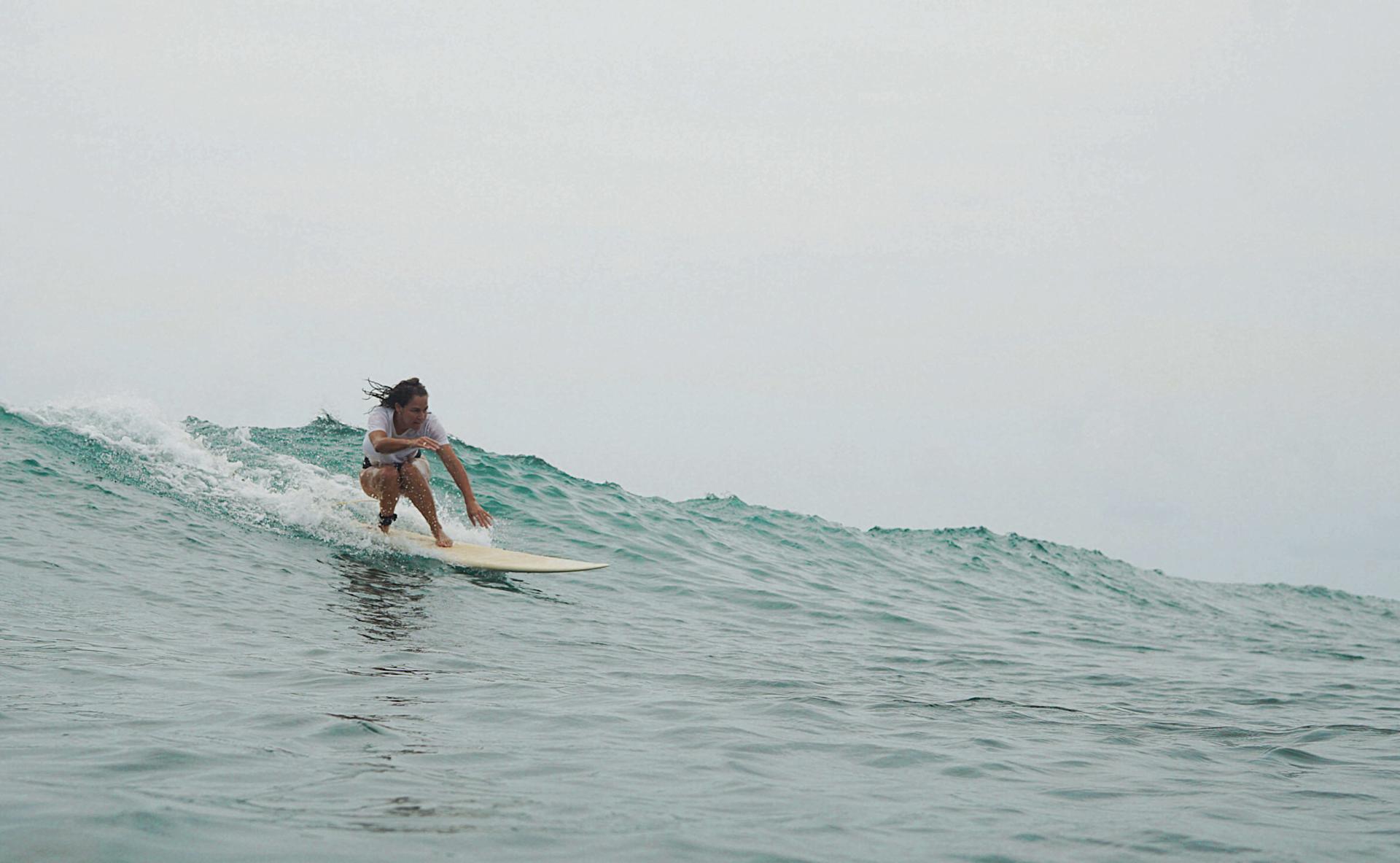
Problem: We get it, looking down on your board and checking on your position feels like the natural thing to do when you start surfing. But where you look is where you go, if your eyes are looking down then you are very likely to lose your balance and fall!
How to fix it: The answer here seems pretty simple, just don't look down! This may be easier said than done though, but as you progress you will feel more and more comfortable in keeping your eyes focused on where you're going instead. Looking forward = moving forward!
Mistake number 9: Not having the right stance
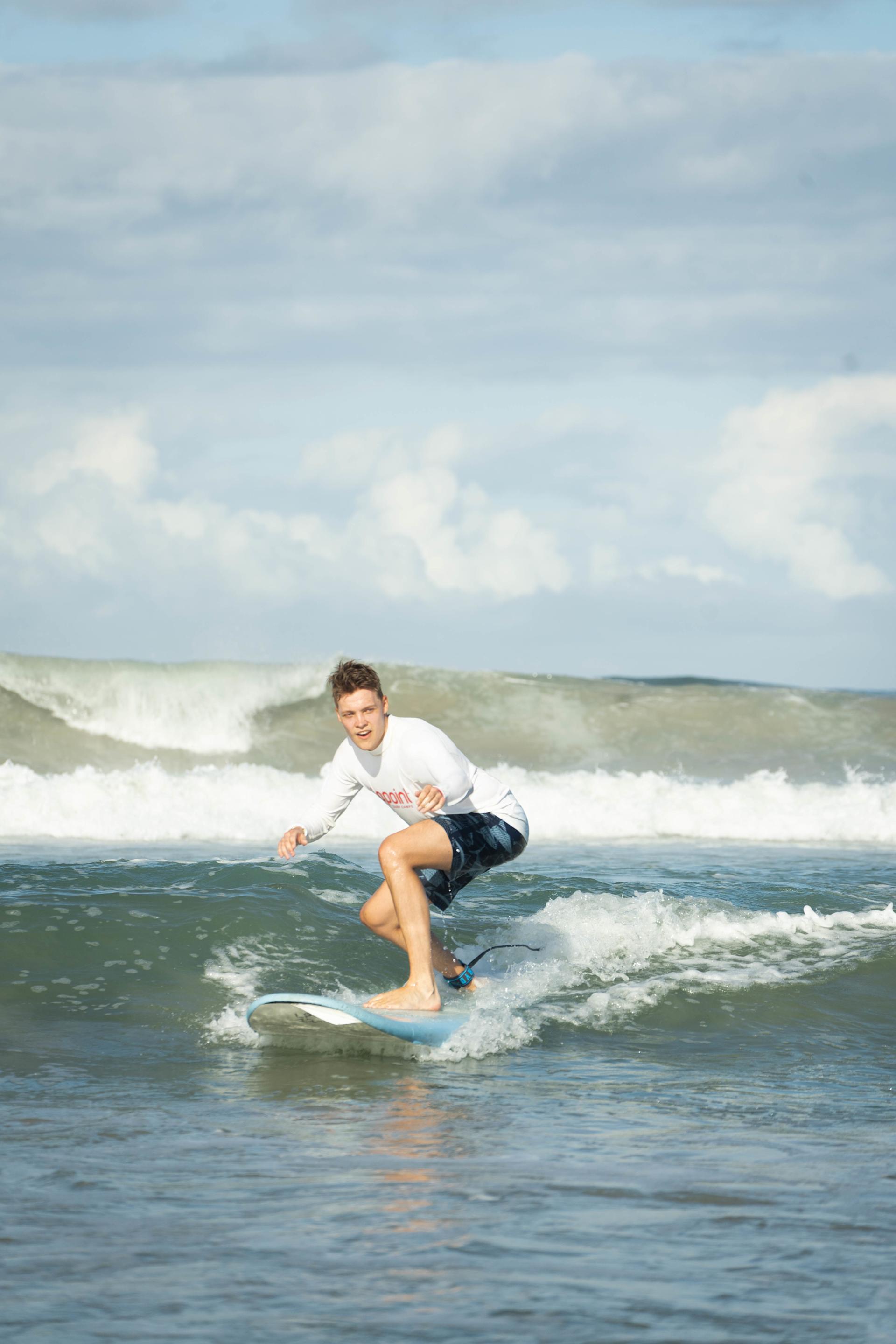
Problem: After you have done your pop up, a common mistake is forgetting to keep a good posture. Many beginners do a so-called “poo stance”, which may feel like a stable and balanced position, but to more advanced surfers it looks a bit laughable. The “poo stance” is when the surfer is standing wide, with the knees out to each side and bent at the waist.
How to fix it: This stance occurs because the surfer feels like they can balance properly there, but it actually limits your rotation ability and should be avoided. It will feel (and look) way better if you bend your knees and have your back knee rotated a bit inwards.
Mistake number 10: Not playing by the rules
Problem: You may haven't thought about it, but there are quite a few rules in the ocean that need to be followed when surfing around other people. These rules aren't like in basketball or hockey, it’s called surf etiquette and can be different depending on where you surf. Breaking these rules can lead to making enemies in the water, which none of us wants to get.
How to fix it: As a beginner, it will take a while before you start surfing in the lineup and need to adapt to all the rules in the water. Your surf teacher will tell you about the dos and don'ts, such as not to snake or drop in. But when it comes down to it, it’s all about respecting the other surfers and apologizing when you’re making a mistake.
If you’re interested in learning the basic rules of surf etiquette and ethics, check out this post.
Mistake number 11: Having a shitty attitude
Problem: Learning to surf is a long journey, and yes, it can be really frustrating at times. It isn’t uncommon among beginners to believe that they will be great surfers in no time and then get disappointed and annoyed when that doesn't happen.
How to fix it: At the end of the day, we’re all out here surfing because we enjoy it and have an amazing time in the ocean. Keeping a good attitude is key for you to enjoy your progress, it may be slow but feeling grumpy about that won’t make it go any faster. Enjoy every moment of it and don't give up!
Key takeaways: Beginner surf mistakes & how to fix them
Pick the right board: A soft-top is your friend! Bigger boards = more balance & control.
Warm up before hitting the waves: Jog, stretch, and pop-up practice to prevent injuries.
Carry your board properly: No dragging! Keep it under your arm to avoid damage.
Wear your wetsuit correctly: Check that it’s not inside out or backward.
Know the conditions: Learn from instructors, check forecasts, and be aware of rip currents.
Time your pop-up: Paddle efficiently and pop up when you feel the wave lift you.
Avoid grabbing the rails: Hands under your chest for a stable pop-up.
Keep your eyes up: Where you look is where you go! Focus forward.
Fix your stance: Bend your knees, avoid the "poo stance," and stay balanced.
Respect surf etiquette: No snaking, no dropping in, and always apologize if needed.
Keep a good attitude: Progress takes time. Have fun, enjoy the process, and keep stoked!
What is the first trick to learn in surfing?
The first trick every beginner should learn is the pop-up. This is the movement of quickly getting from lying on your board to a standing position. Mastering a smooth pop-up is key to catching waves confidently.
What is the first rule of surfing?
The first rule of surfing is respect the lineup. This means understanding priority (who has the right of way on a wave), not dropping in on others, and being mindful of fellow surfers in the water. The most important thing is to keep yourself and the surfers around you safe!
Is 25 too old to start surfing?
Not at all! 25 is a great age to start surfing. Many people pick up surfing in their 30s, 40s, or even later. With practice, patience, and the right conditions, anyone can learn and enjoy the sport.
How hard is it to surf for beginners?
Surfing can be challenging at first—balancing on a moving wave, paddling efficiently, and reading the ocean all take time to learn. But with consistency and the right mindset, progress comes quickly!
NEWSLETTER
Stay up to date, sign up for our newsletter
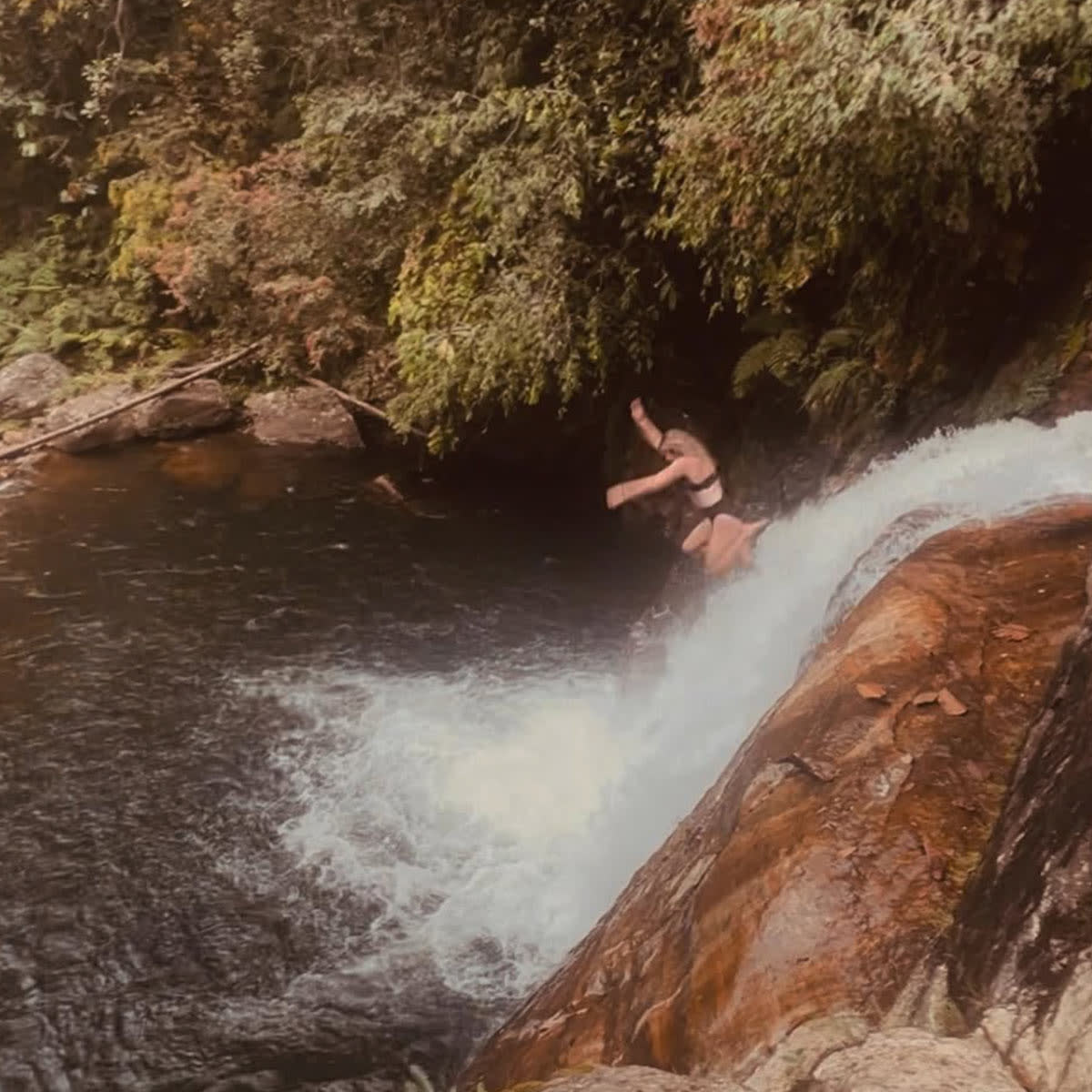
Beatrice Lindfors
About the author: My name is Beatrice, but Bea for short, and I’ve been a writer and content creator for Lapoint since 2022. My life revolves around my laptop and backpack as I travel the world, always with a stop in Ericeira; the camp vibe and the Portuguese sunsets have my heart.
Life goal? Visit every country.
Obsession? The Sri Lanka waves, the Atlantic Ocean and tracking down the best coffee (whichever my current location is).

